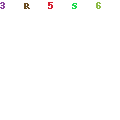
Thursday's Therapy
What Makes a Grief Group Therapeutic?
A few weeks ago, a mother came onto one of the grief groups available on the internet, totally exasperated and asked, in effect,
What good is any of this we do, just sharing our pain with one another? I just get depressed with all of our hurt and pain. So please tell me how any of this is helping; how is it doing us any good?
Our hurt and pain can be overwhelming to walk through. It can also be overwhelming to read about others' pain. Timing is everything, and even the degree of pain that we take in at any given time needs to be managed. But what about this woman's question? What good does our sharing and responding to one another's pain do?
Tommy and I were watching a stress video available through Netflix streaming not too long ago. The scientist on this video shared:
Now that we have brain imaging, we can begin to see what happens in the brain when we are doing any number of activities.
She said that when people shared their pain and received verbal comfort back, the parts of the brain lit up that showed there was comfort being received! But what surprised me was the scientist shared that even one's giving verbal comfort to someone else would also stir up the same comfort zones in one's brain!
So not only receiving, but also giving comfort can stir the elements in the brain to bring comfort to our grief-torn hearts, souls, and brains!
*****
We are all substantially flawed, wounded, angry, hurt, here on Earth. But this human condition, so painful to us, and in some ways shameful--because we feel we are weak when the reality of ourselves is exposed--is made much more bearable when it is shared, face-to-face, in words that have expressive human eyes behind them.
~Alice Walker, Anything We Love Can Be Saved
*****
Saki Santorelli, in his book, Heal Thy Self: Lessons on Mindfulness in Medicine, talks about his therapeutic groups he leads. I am sure much pain is verbalized within these groups, yet somehow the groups are therapeutic overall for the people. What is it about these groups that enables great pain to be processed through, yet is therapeutic for all there? Santorelli first shares some of the stories people tell about their own individual struggles. Then he summarizes the process of what happens to make this communication a therapeutic process for all:
Curiously, in the midst of these unfolding stories I notice a lightness emerging. There is an unburdening here that is not simply cathartic. The most pronounced feeling in the room is not one of heaviness but one of deep acknowledgment. Such honoring is nothing less than an expression of strength and courage that feels akin to a collective rolling up of our sleeves rather than the bursting of an emotional dike that will sweep us away in helplessness and despair. It is the beginning of a relationship.
We are revealing our wounds to one another. We are naming them but not being decimated by them. Quite the contrary. The usual tendency to strongly identify with and elevate "my" pain or "my" problem is slowly being dissolved in the recognition of our collective condition and in our willingness to live together, even for a few moments, inside this shared reality. There is a spontaneous arising of mindfulness--of awareness cultivated by our willingness to hear one another, to sit together without judgment, without giving advice, without reaching for easy answers or invoking shallow affirmations.
(W)e are all…attending to and making bearable our wounds, by sharing as Alice Walker describes it,
"face to face, in words that have expressive human eyes behind them."













































No comments:
Post a Comment